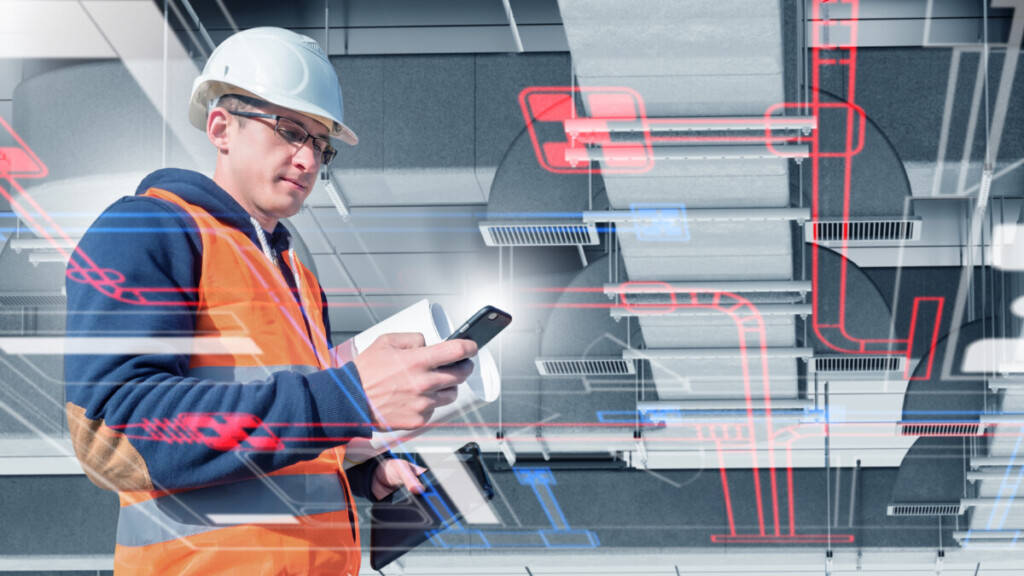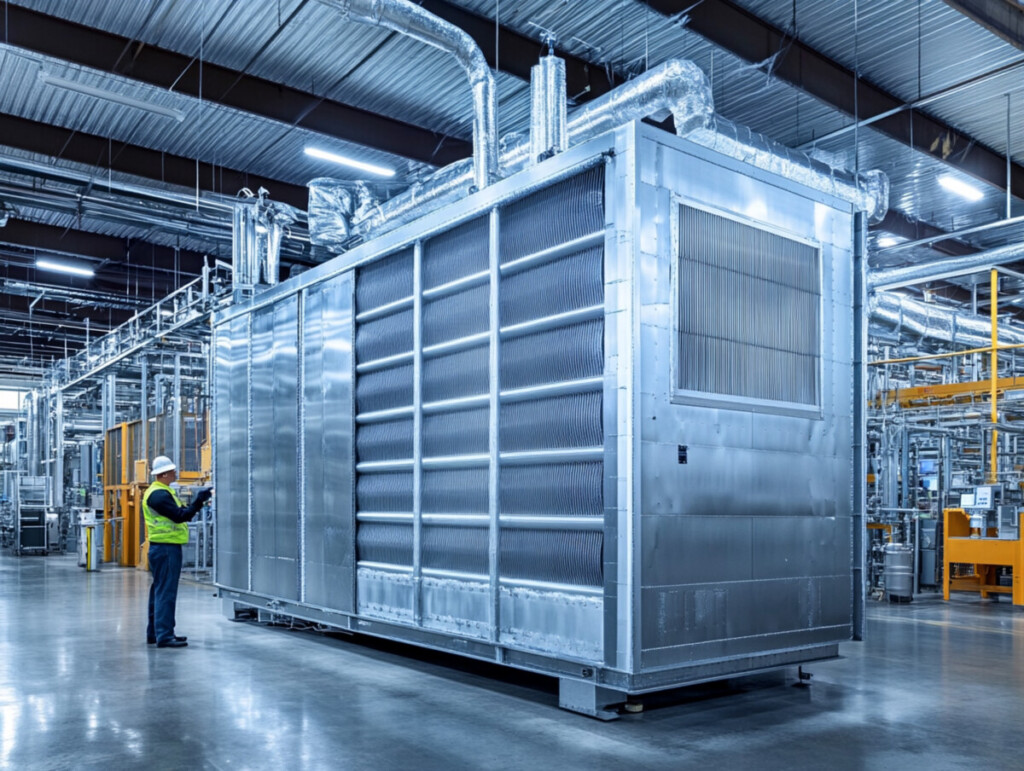Beyond the Smart Thermostat: The Hidden Reality of Connected Commercial HVAC

When most of us think about the IoT, we may picture consumer conveniences like a smart thermostat we can adjust from our phone, or a voice-activated home assistant. But beyond the consumer world lies a far more complex and high-stakes ecosystem: commercial and industrial connected equipment.
The HVAC industry relies upon countless heavy-duty machines, with deployments that can span upwards of 20 years, that often support critical business operations. What does it really take to connect thousands of these assets in the field and create a reliable digital experience?
This post explores five critical insights about the real-world challenges and opportunities of connecting the HVAC devices we all depend on, and what they mean for the future of facility management.
1. Connectivity Has Become Table Stakes, Not a Revenue Stream
Connectivity is rapidly becoming an expected feature included in a product’s upfront cost, not a monthly add-on service. In practice, this often means Wi-Fi for basic connectivity, though depending on the application, Wi-Fi access is not always available, reliable, or permitted.
This is especially true in the residential market, where subscriptions for basic connectivity features remain virtually unheard of. In the commercial sector, businesses are willing to pay for enhanced services, but the value proposition is visceral and immediate. When a restaurant’s hot water system goes down, they don’t just face inconvenience, they lose their business licence and have to shut down operations.
The most effective business models focus on empowering service contractors rather than direct subscriptions. The real value of connectivity becomes clear during “pain points”, those crisis moments when the ability to use data to dramatically reduce downtime transforms from a nice-to-have feature to a business-critical capability. Platforms like Soracom help keep costs predictable while ensuring reliable, IT-independent performance that protects uptime and reduces costly site visits.

2. The Biggest Point of Failure Isn’t in the Cloud, It’s in the Field
While planning discussions often obsess over cloud architecture, edge computing, and firmware updates, field experience reveals a more prosaic truth: the biggest barrier to IoT success isn’t always technological sophistication – it’s often practical utility during installation.
The people installing commercial water heaters and HVAC systems are plumbers, heating experts, and mechanical contractors, not IT specialists. Their primary goal is to get the climate control units running as quickly as possible. Connecting the device to a network is a secondary concern at best.
If the connectivity process presents any barrier – requiring a call to an IT department, navigating complex network configurations, or troubleshooting cellular signal issues – it may simply be abandoned, as installers typically work tight schedules. This reality means that a simple, foolproof, and fast installation process is absolutely essential for market success.
By eliminating dependence on local Wi-Fi networks and IT departments, cellular connectivity with simple activation processes can dramatically improve deployment success rates. The installation becomes plug-and-play: insert a SIM, power on the device, and the connection establishes automatically, no calls to IT.
This also addresses a growing trend in commercial environments: increasing resistance to external equipment on corporate or venue Wi-Fi networks. Concerns over cybersecurity, data privacy, and even mistrust of connected meters and HVAC systems mean many operators now refuse third-party devices on their networks, making secure cellular connectivity the practical and trusted alternative.
3. IoT’s Most Compelling ROI: Eliminating Unnecessary Site Visits
A primary driver for IoT adoption in commercial HVAC is remote monitoring, a simple yet powerful process that all but eliminates unnecessary site visits.
With IoT-enabled systems, the technician can remotely access diagnostic data before leaving the shop, deciphering the primary issue and bringing the correct parts on the first visit. When you factor in labor costs, vehicle expenses, and lost productivity, reducing the number of visits can have a significant economic benefit.
This efficiency does more than save money, it’s a powerful enabler for scaling a service business. Connected equipment helps service contractors grow their capacity without needing to grow their technician base
But here’s a critical nuance: not all device data is equally valuable, and transmitting everything to the cloud can create unnecessary costs and delays. This is where intelligent data processing at the network edge becomes crucial. Solutions like Soracom Flux enable HVAC manufacturers to pre-process data before it reaches backend systems, filtering out routine telemetry while immediately flagging genuine fault conditions that require technician attention.
An HVAC unit generates temperature readings every minute, but service contractors don’t need continuous streams, only deviations from expected patterns, error codes, or components exceeding normal parameters. By applying customizable rules at the network edge, manufacturers dramatically reduce data transmission costs while ensuring critical alerts reach technicians instantly.

4. Reliable Connectivity is Critical to Protecting Decades of Engineering Excellence
A great product can be undermined by poor connectivity management. Even HVAC brands with decades of engineering excellence can damage their reputation if device connectivity is unreliable or if users struggle to access real-time data from their equipment.
For today’s facility managers and service teams, the digital experience, reliable connectivity, fast updates, and seamless SIM management are seen as part of the product itself. A clunky or unreliable connectivity layer can make even the best HVAC hardware appear to fall short.
By partnering with IoT connectivity management experts like Soracom, manufacturers can ensure their devices are always connected, secure, and easy to manage from a single platform. As detailed in Soracom’s approach to smart facilities, the right connectivity platform can handle the complex networking, security, and data routing challenges, allowing manufacturers to focus on their core competency: building exceptional HVAC equipment.
5. The Next Frontier: From Reactive Alerts to Predictive Intelligence
Moving from reactive alerts to proactive, preventative maintenance powered by artificial intelligence is more than a technical achievement, it represents a complete business model transformation. It’s the key to evolving beyond traditional time-and-materials contracts toward guaranteed uptime agreements – selling outcomes instead of hours.
This vision relies on AI and machine learning, as the sheer volume of data streaming from thousands of machines (such as temperature fluctuations, pressure readings, cycle counts, run times, and error codes) is too much for human analysts to evaluate effectively. AI makes identifying the subtle patterns and correlations that reliably predict component failures before they occur easier and more attainable.
The challenge for HVAC manufacturers isn’t just collecting data; it’s getting that data to AI platforms in a format they can use, without building complex backend infrastructure. This is where intelligent data routing becomes transformative.
Using platforms like Soracom Flux, manufacturers can create customized data pipelines without advanced coding expertise. Device data can be pre-processed and formatted at the network edge, aggregating readings into time-series data suitable for machine learning, batching transmissions to reduce costs, or filtering out normal operating data to focus AI models on anomalous patterns.
These pipelines can apply policy-based rules per device or group, ensuring that different equipment types send appropriately formatted data to AI/ML platforms. The platform handles secure transport to multiple endpoints (be it AWS, Azure, Google Cloud AI services, or private machine learning infrastructure) with minimal configuration.
The professionals who embrace these AI-powered tools will learn to work smarter. Predictive maintenance enhances human expertise, helping optimize energy use, extend equipment life, and reduce waste from premature replacements or unnecessary service visits.

Conclusion: Connecting Infrastructure, Enabling Intelligence
IoT in commercial HVAC is about more than gadgets, it’s about rewiring service models in an industry built on reliability and trust.
Success requires connectivity that “just works,” cellular solutions, simple activation, and platforms that scale. It also requires intelligence at every layer: edge processing to reduce costs, flexible data routing, and AI integration that turns telemetry into predictive insights.
As AI turns data into predictions, “maintenance” and “reliability” are being redefined. Connected HVAC succeeds by keeping systems running, reducing waste, and building sustainable facilities.
The question isn’t whether to embrace connected HVAC, it’s whether you have the right foundation to make intelligence at scale both practical and profitable.
Got a question about Soracom? Whether you’re an existing customer, interested in learning more about our products and services, or want to learn about our Partner program – we’d love to hear from you!






